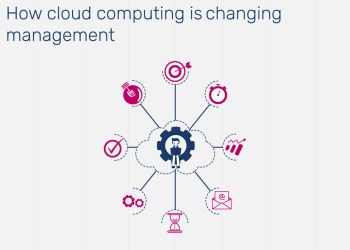Back in January 2018, LogicMonitor conducted a study – Cloud Vision 2020: The Future of Cloud – that claims that by 2020, 83 percent of enterprise workloads will move to the cloud. The study also deals with serious questions about data security associated with this massive move to the cloud.
According to the same study, 66 percent of IT professionals believe that security is their biggest concern after moving their enterprise data into the cloud. The numbers may vary over time, but the report points to a growing concern about cloud computing strategies and why security provided by cloud providers isn’t sufficient.
Measures to Ensure Cloud Data Security
Cloud computing helps businesses of all sizes operate and scale seamlessly with minimal IT infrastructure investment. However, bearing in mind the many cloud security risks and threats, especially for enterprises from highly-regulated industries such as banking, healthcare, and insurance, it is important to take multiple measures to protect data on the cloud.
1. Implement an identity and access management system:
The purpose of an identity and access management system (IAM) is to ensure that the right people get access to the right assets of the enterprise. In today’s digitally enabled world, an IAM solution is a crucial part of an enterprise’s security plan. An IAM system helps an enterprise manage and control user access using single sign-on (SSO) systems, multi-factor authentication, and privileged access management. The right IAM solutions help enterprises facilitate secure, efficient access to technology resources across diverse systems while delivering a number of benefits such as:
- Effective access to resources wherein users access them through a centralized platform.
- Reduction in security costs considering a single IAM system manages all user access, which allows administrators to focus on other work apart from security.
- Better approach to data security through the combined functionalities of authentication and authorization available on a single platform.
2. Keep testing your security measures:
While it’s important to keep up with the times and constantly update security measures, it’s also important to keep a check on existing measures. Testing of networks, firewalls, servers, IP addresses, and so on, can be expensive but it pales in comparison to the losses an organization would face in the event of a cyber-attack.
This year witnessed some massive data breaches, prompting corporates and government agencies to focus more than ever on their data security. One of the first areas of focus necessary to prevent such breaches is to validate existing security systems. That’s why organizations of all kinds are increasingly engaging with white hat or ethical hackers for in-depth security evaluations.
As a bonus, testing your cloud security measures on a regular basis can make a huge difference, not only to ensure security but also to improve the performance of the system as a whole.
3. Consider the possibilities of an inside attack:
When it comes to data breaches, there is a tendency to believe that only outsiders would launch an attack against your organization. By not considering that an insider could be responsible for compromising your data, the whole act of taking strict security measures can be made futile.
An attack from within the organization isn’t unheard of – in fact, as per the 2019 Insider Threat Report from Cybersecurity Insiders, 70 percent of organizations are witnessing inside attacks quite often. In the past 15 months, 60 percent of these organizations have experienced at least one Identity and Access Management solution such attack. Irrespective of the industry your enterprise operates in, the possibility of internal attacks shouldn’t be taken lightly – especially considering such breaches can often go undetected.
To protect your organization against internal breaches, make sure that no user should have access privileges beyond the scope of their job. This restriction includes applications and devices. Revoke access to irrelevant applications, and be prompt in removing all access privileges when an employee leaves. Moreover, impose a restriction on what data applications the employee/user can access, the location they can access it from and through what device.
It is also important to train your users or employees to prevent any accidental leak of sensitive data. Be persistent with the training and stay updated with their progress.
At CloudNow, our cloud consultants and cloud migration experts ensure that data security is an important consideration in every solution we deliver. Our expertise in cloud security has also resulted in the creation of our Identity and Access Management solution (IAM), Akku. To do what’s right to secure your data, get in touch with us today!













